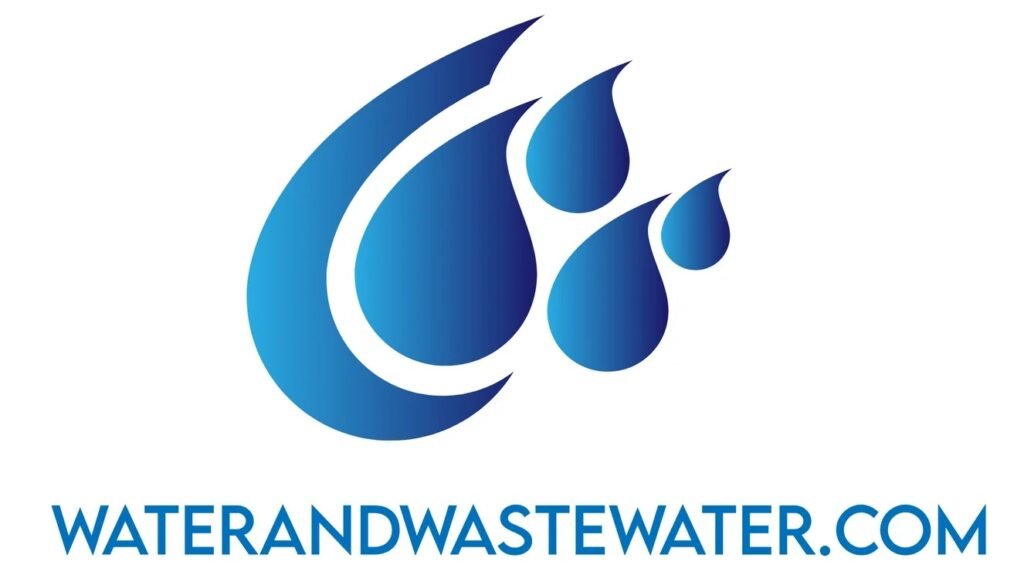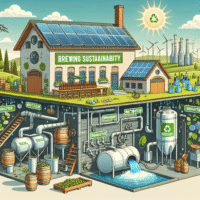Paint Industry Wastewater Treatment: Efficient Solutions for Environmental Compliance

Paint industry wastewater treatment is a crucial process for protecting the environment and human health. The paint manufacturing process creates wastewater that contains various pollutants, including heavy metals, solvents, and pigments. These contaminants can harm ecosystems and water sources if not properly managed.
Effective paint industry wastewater treatment involves a combination of physical, chemical, and biological processes to remove harmful substances before discharge. Common methods include sedimentation, filtration, chemical precipitation, and biological treatment. Advanced techniques like membrane filtration and activated carbon adsorption may also be used for more thorough purification.
Proper wastewater management in the paint industry not only helps companies comply with environmental regulations but also supports sustainable practices. By treating and reusing water, paint manufacturers can reduce their environmental impact and improve their overall efficiency. This approach benefits both the industry and the communities in which they operate.
Key Takeaways
- Paint industry wastewater contains harmful pollutants that require specialized treatment.
- A combination of physical, chemical, and biological processes effectively removes contaminants.
- Proper wastewater management supports environmental compliance and sustainable practices.
Wastewater Challenges in the Paint Industry
Paint manufacturing creates wastewater with unique characteristics. This poses challenges for treatment and meeting environmental standards.
Paint Production Wastewater Characteristics
Paint wastewater often contains high levels of suspended solids, heavy metals, and organic compounds. These come from pigments, binders, and solvents used in production.
Common contaminants include:
- Titanium dioxide
- Zinc oxide
- Lead compounds
- Volatile organic compounds (VOCs)
The pH of paint wastewater can vary widely. It may be acidic or alkaline depending on the formulations.
Wastewater volumes fluctuate based on production levels and cleaning processes. This makes consistent treatment difficult.
Environmental Regulations and Standards
Paint manufacturers must comply with strict wastewater discharge regulations. The U.S. Environmental Protection Agency sets limits on pollutants in industrial effluent.
Key regulated parameters include:
- Biochemical oxygen demand (BOD)
- Chemical oxygen demand (COD)
- Total suspended solids (TSS)
- Heavy metals
- pH
Local water authorities may impose additional requirements. These often focus on protecting municipal treatment systems.
Companies face fines for non-compliance. They must invest in proper treatment to meet standards and avoid penalties.
Primary Treatment Processes
Primary treatment processes form the initial stage of paint industry wastewater treatment. These methods focus on removing large particles, solids, and some chemical contaminants from the wastewater stream.
Chemical Treatment and Dosing
Chemical treatment involves adding specific chemicals to the wastewater to neutralize pH levels and break down certain pollutants. Common chemicals used include lime, caustic soda, and sulfuric acid.
Dosing systems precisely control the amount of chemicals added. This ensures optimal treatment while minimizing costs and environmental impact.
Proper chemical dosing can reduce the load on later treatment stages. It helps remove oils, greases, and some heavy metals from paint wastewater.
Coagulation and Flocculation
Coagulation and flocculation are key processes for removing suspended solids and colloidal particles from paint wastewater. Coagulants like aluminum sulfate or ferric chloride are added to destabilize particles.
This causes small particles to clump together, forming larger flocs. These flocs are easier to remove through sedimentation or filtration.
Polymers may be added to enhance floc formation. The process can remove up to 90% of suspended solids from paint wastewater.
Heavy Metal Removal Techniques
Paint industry wastewater often contains heavy metals like lead, chromium, and cadmium. Precipitation is a common method for heavy metal removal.
This involves raising the pH to form insoluble metal hydroxides. The precipitated metals can then be filtered out or settled in a clarifier.
Ion exchange and adsorption using activated carbon are also effective for heavy metal removal. These techniques can achieve high removal rates, often exceeding 95% for many metals.
Proper disposal of the resulting metal-rich sludge is crucial to prevent environmental contamination.
Secondary Treatment Strategies
Secondary treatment removes organic matter and suspended solids from paint industry wastewater. It uses biological processes and specialized plants to further clean the water after primary treatment.
Biological Treatment Processes
Activated sludge is a key biological treatment process for paint wastewater. It uses microorganisms to break down organic contaminants. Aeration tanks mix wastewater with bacteria-rich sludge. The bacteria consume pollutants as food.
Trickling filters offer another option. Wastewater trickles over beds of rocks or plastic media. A biofilm of microbes grows on the media surface. As water passes through, the biofilm degrades organic matter.
Rotating biological contactors use large discs partly submerged in wastewater. As the discs rotate, they expose biofilm to both air and water. This allows aerobic bacteria to thrive and break down pollutants.
Effluent Treatment Plants
Effluent treatment plants (ETPs) clean paint industry wastewater before discharge. A typical ETP includes several stages. First, equalization tanks balance flow and pollutant levels. Next, the water undergoes pH adjustment.
Coagulation and flocculation follow. Chemicals are added to make particles clump together. The clumps are then removed through sedimentation or flotation.
Sand filters or activated carbon may provide final polishing. These remove any remaining fine particles or dissolved contaminants. Regular monitoring ensures the treated effluent meets regulatory standards before release.
Advanced Wastewater Treatment Systems
Advanced wastewater treatment systems use cutting-edge technologies to remove contaminants from paint industry wastewater. These systems employ filtration and sophisticated treatment methods to clean and reuse water effectively.
Wastewater Filtration Technologies
Advanced filtration technologies play a key role in treating paint industry wastewater. Membrane filtration, such as ultrafiltration and reverse osmosis, removes fine particles and dissolved solids.
Activated carbon filters absorb organic compounds and colors. These filters are especially useful for removing paint pigments and solvents.
Ion exchange systems help remove metal ions from wastewater. This process is crucial for paint industries that use metal-based pigments.
Biofiltration uses microorganisms to break down organic pollutants. This eco-friendly method is effective for biodegradable paint components.
Sophisticated Treatment and Reuse
Advanced oxidation processes use chemicals or UV light to break down complex organic molecules in paint wastewater. This method tackles hard-to-remove contaminants.
Electrocoagulation is an emerging technology that uses electricity to remove suspended solids and metals. It’s effective for treating paint wastewater with high solids content.
Membrane bioreactors combine biological treatment with membrane filtration. This system produces high-quality effluent suitable for reuse in paint manufacturing.
Wastewater reuse systems recycle treated water back into the production process. This approach reduces water consumption and disposal costs for paint industries.
Sustainable Wastewater Management
Sustainable wastewater management in the paint industry focuses on recycling water and treating hazardous wastes. These practices reduce environmental impact and conserve resources.
Water Recycling and Reclamation
Paint manufacturers can recycle wastewater to reduce freshwater use. They often employ membrane filtration or reverse osmosis to clean used water.
Recycled water serves many purposes in paint production:
- Cleaning equipment
- Cooling systems
- Mixing paint ingredients
Some plants achieve up to 80% water reuse through these methods. This cuts costs and helps meet environmental regulations.
Advanced treatment systems remove contaminants like pigments and solvents. The cleaned water can then be safely reused or released into the environment.
Treatment of Hazardous Wastes
Paint industry wastewater often contains toxic chemicals. These require special handling and treatment.
Common hazardous waste treatment methods include:
- Chemical oxidation
- Activated carbon adsorption
- Biological treatment
These processes break down or remove harmful substances. The goal is to make the water safe for reuse or discharge.
Activated sludge treatment is a popular biological method. It uses microbes to digest organic pollutants in wastewater.
Proper disposal of treated sludge is crucial. It may be incinerated or sent to specialized landfills. Some facilities turn it into useful products like construction materials.
Implementing Industry Best Practices
Paint industry wastewater treatment requires careful attention to best practices. An Effluent Treatment Plant is a key component in managing paint waste. These plants use physical, chemical, and biological processes to clean wastewater.
Sustainable wastewater practices are crucial for paint manufacturers. This includes reducing water use, recycling water when possible, and properly disposing of sludge. Companies can install water-efficient equipment and train staff on conservation methods.
Treating hazardous waste is a major concern in the paint industry. Many paints contain chemicals that can harm the environment. Proper handling and disposal of these substances is essential. This may involve neutralization, solidification, or incineration of waste.
Paint companies can benefit from technical assistance programs offered by environmental agencies. These programs provide guidance on improving wastewater treatment processes and meeting regulatory standards.
Regular monitoring and testing of wastewater is important. This helps ensure treatment systems are working effectively. It also allows companies to quickly address any issues that arise.
Employee training is crucial for implementing best practices. Workers should understand proper waste handling procedures and the importance of following environmental regulations.
Frequently Asked Questions
Paint industry wastewater treatment involves complex processes to manage effluents containing solvents, pigments, and other chemicals. Recent advancements have improved treatment efficiency and reduced environmental impact. Proper management is crucial for regulatory compliance and sustainability.
How does the paint industry typically manage effluent?
The paint industry uses a mix of physical, chemical, and biological treatments to manage effluent. Common methods include:
Screening to remove large particles
Sedimentation tanks to settle out solids
Chemical coagulation to clump smaller particles
Filtration systems to remove fine particles
Many facilities also use advanced treatment processes like activated carbon adsorption to remove organic compounds and solvents.
What are the latest advancements in wastewater treatment for the paint industry?
Recent advancements in paint industry wastewater treatment include:
Membrane filtration technologies for improved solvent removal
UV oxidation systems to break down organic compounds
Electrocoagulation for more efficient particle removal
Smart monitoring systems for real-time effluent quality control
These innovations help paint manufacturers meet stricter environmental regulations and reduce water usage.
What characteristics are typical of wastewater from the paint manufacturing process?
Paint industry wastewater typically contains:
High levels of suspended solids from pigments and fillers
Organic solvents like toluene and xylene
Heavy metals from certain pigments
Resins and binders
Varying pH levels
These characteristics make paint wastewater challenging to treat and often require multiple treatment stages.
Which treatment methods are most effective for handling solvents in paint industry wastewater?
Effective methods for treating solvents in paint wastewater include:
Air stripping to remove volatile organic compounds
Activated carbon adsorption to capture organic solvents
Advanced oxidation processes to break down complex organic molecules
Membrane filtration, especially nanofiltration and reverse osmosis
These methods can be used alone or in combination for optimal solvent removal.
How has paint industry wastewater treatment evolved since 2020?
Since 2020, paint industry wastewater treatment has seen several changes:
Increased focus on emerging contaminants like PFAS
Greater emphasis on water reuse and closed-loop systems
Adoption of more energy-efficient treatment technologies
Implementation of AI and machine learning for process optimization
These changes reflect growing environmental concerns and technological advancements in the field.
What role do sewage treatment equipments play in managing paint industry wastewater?
Sewage treatment equipment plays a crucial role in paint industry wastewater management:
Primary clarifiers remove large particles and floating materials
Aeration tanks support biological treatment of organic compounds
Secondary clarifiers separate treated water from biological sludge
Tertiary treatment systems provide final polishing before discharge
Many paint facilities use modified versions of municipal wastewater equipment adapted for industrial effluents.


